Idea by
ALOS
Call for ideas 2021
Caring Natures
Caring Natures
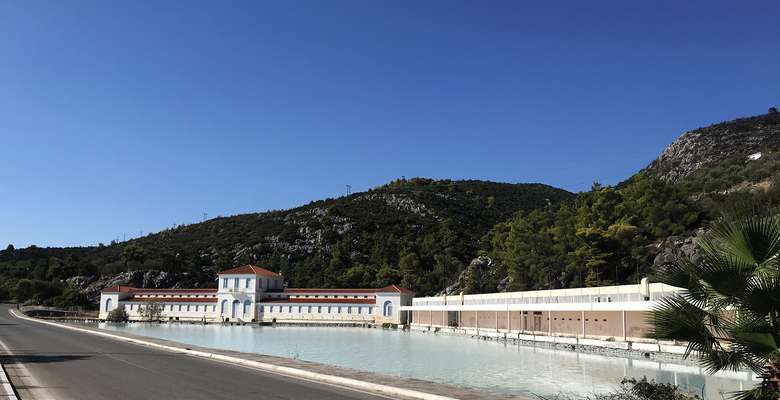
- Site-specific cases
Through documenting, writing, exhibiting and intervening, the project rethinks the relationship of architecture, human and non-human agents relative to healing and care. Minerals, waters, rocks and bodies are entangled in Greek Thermalism: a movement for bathing in thermal springs; it developed in late 19th and early 20th century. The state took care of its citizens through natural resources funding bath towns or “Loutropolis”. They provided natural treatments for a range of medical symptoms but are in decline for decades. This cultural effort with its built artifacts is largely forgotten. The recent financial crisis with its healthcare cuts has further accelerated the disuse and deterioration of buildings. Yet, the municipal buildings remain a steady “source” of support mostly for low income visitors and senior citizens. Ultimately, the project asks: How do we take care of buildings meant to take care? What is the role of architecture and landscape as intertwined natures of care?
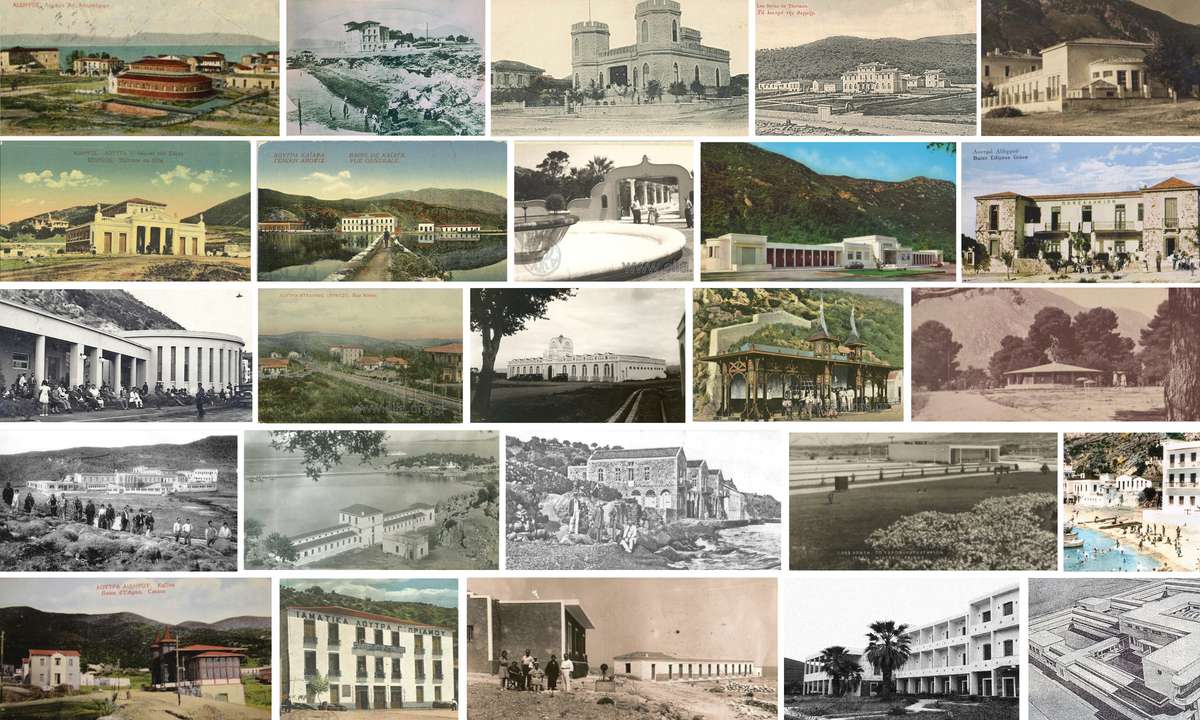
A network of buildings for taking care of bodies across ages was created around Greece. It peaked in the interwar and post war eras.
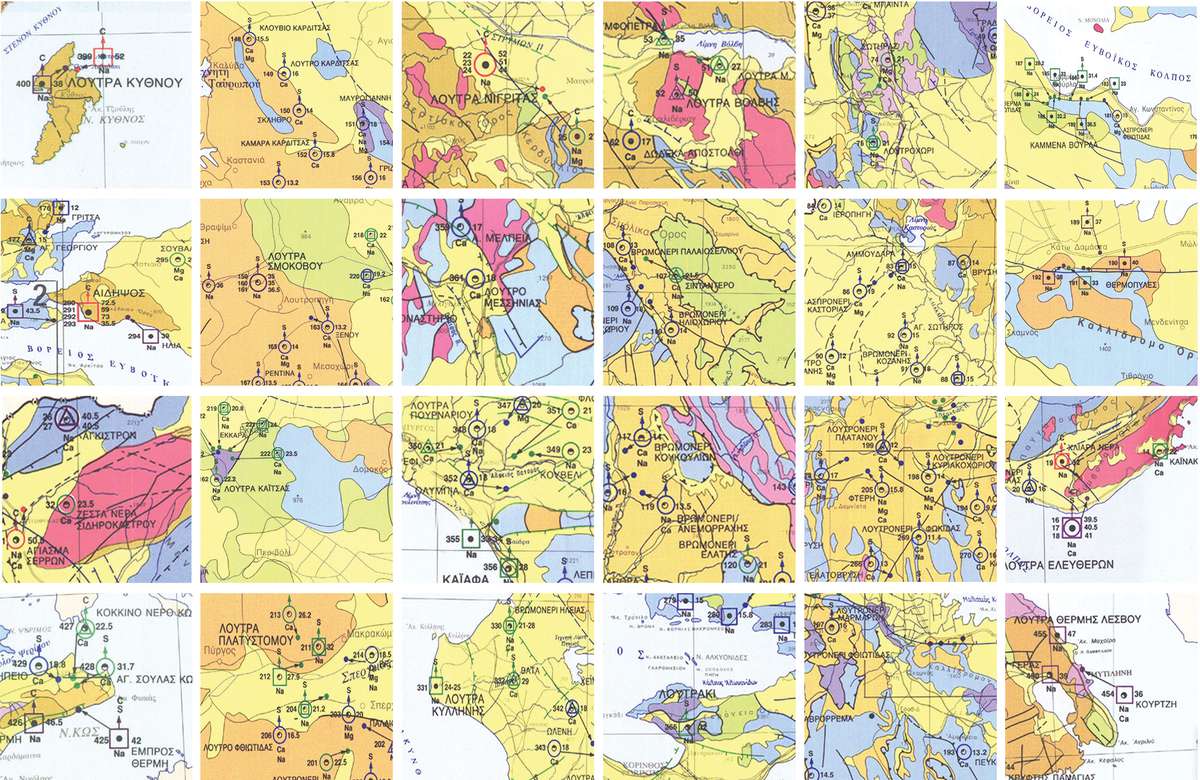
Geochemical maps demonstrate the range of locations and interconnection of minerals, thermal waters and bath towns.
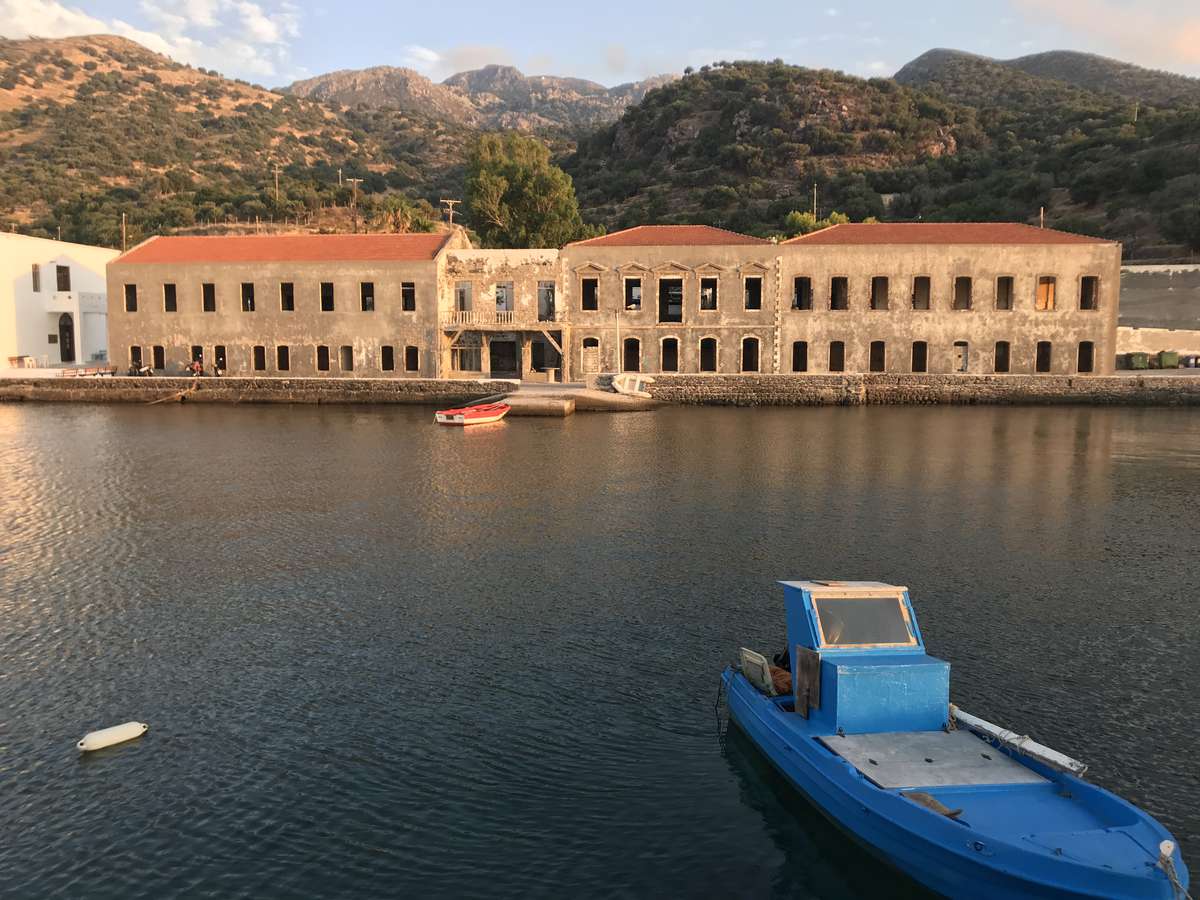
The majority of the buildings are now in decline, either abandoned or in serious need of maintenance and repair.
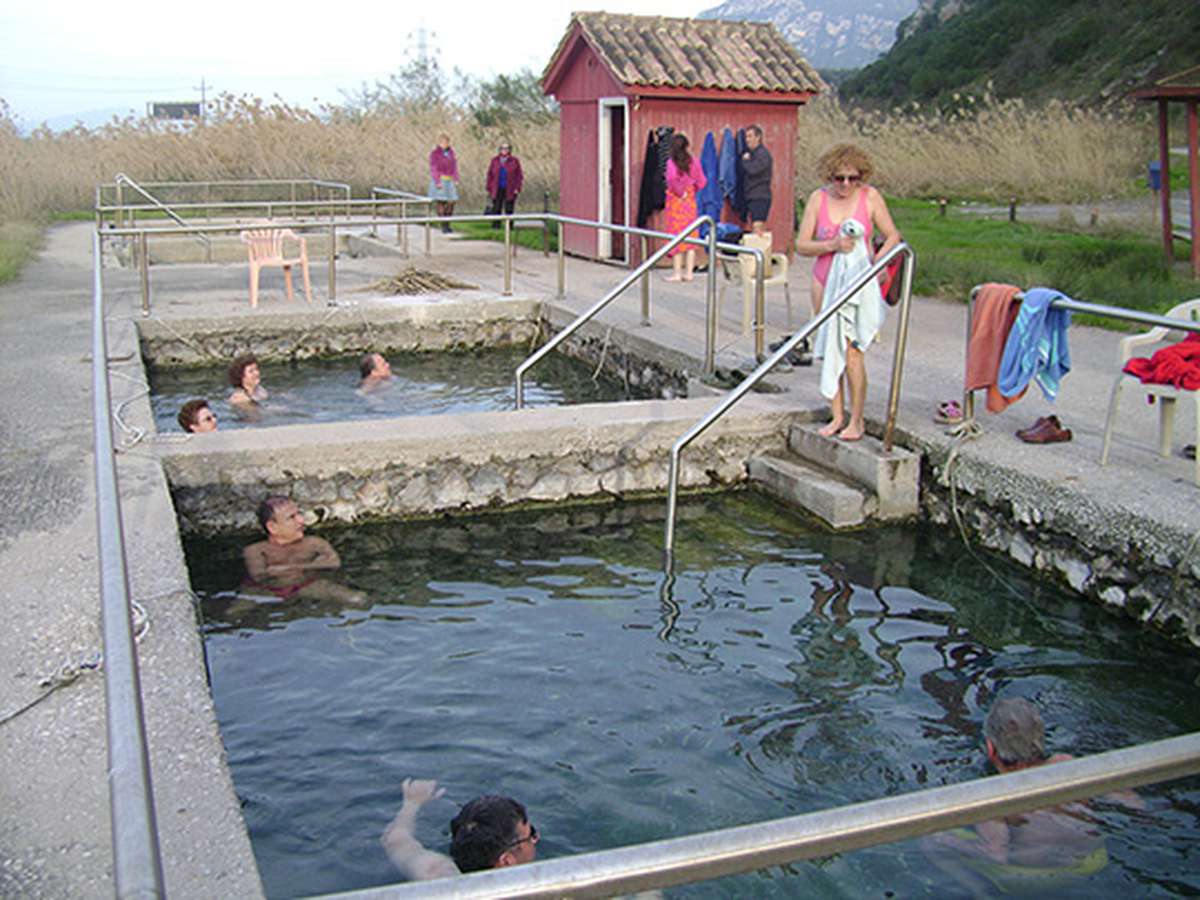
Yet, municipal bath buildings and open air thermal water pits remain a steady “source” of support mostly for low income visitors and senior citizens.
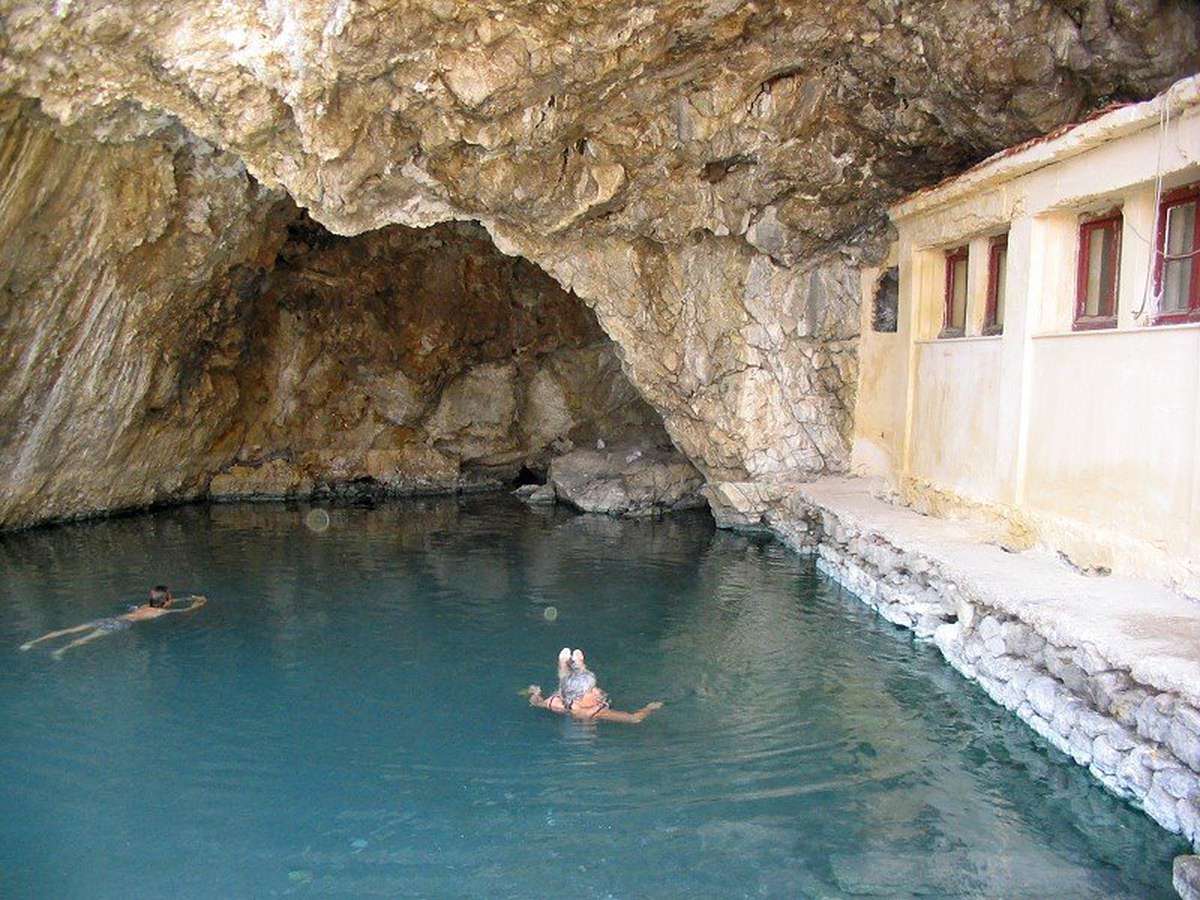
As non-human agents in their various states and forms - seismic, volcanic, geologic, tectonic, healing, vaporous, liquid, muddy, -minerals mobilized a scientific, medical, political, institutional and legislative apparatus. Loutropolis are composites of buildings and landscapes.
Caring Natures
Caring Natures

- Site-specific cases
Through documenting, writing, exhibiting and intervening, the project rethinks the relationship of architecture, human and non-human agents relative to healing and care. Minerals, waters, rocks and bodies are entangled in Greek Thermalism: a movement for bathing in thermal springs; it developed in late 19th and early 20th century. The state took care of its citizens through natural resources funding bath towns or “Loutropolis”. They provided natural treatments for a range of medical symptoms but are in decline for decades. This cultural effort with its built artifacts is largely forgotten. The recent financial crisis with its healthcare cuts has further accelerated the disuse and deterioration of buildings. Yet, the municipal buildings remain a steady “source” of support mostly for low income visitors and senior citizens. Ultimately, the project asks: How do we take care of buildings meant to take care? What is the role of architecture and landscape as intertwined natures of care?
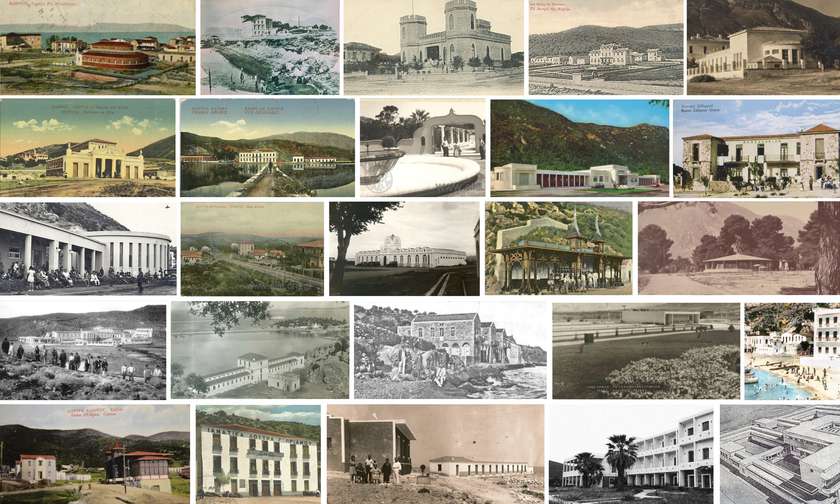
A network of buildings for taking care of bodies across ages was created around Greece. It peaked in the interwar and post war eras.
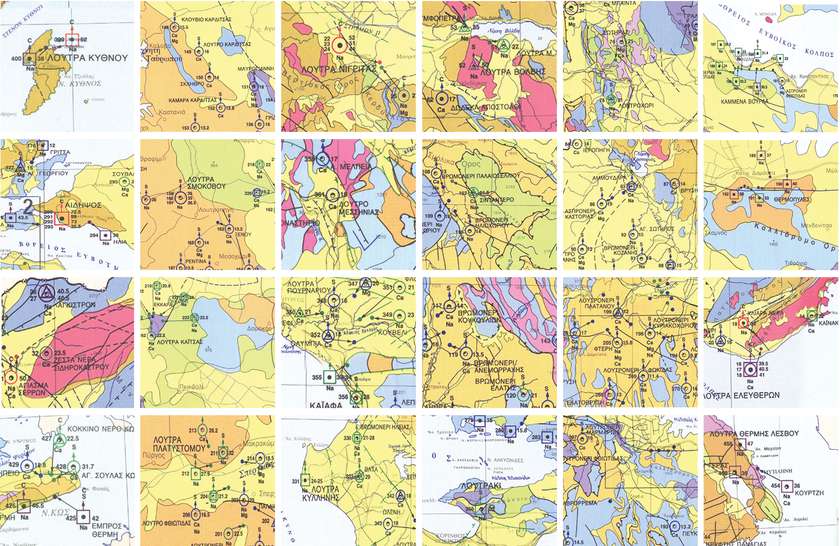
Geochemical maps demonstrate the range of locations and interconnection of minerals, thermal waters and bath towns.
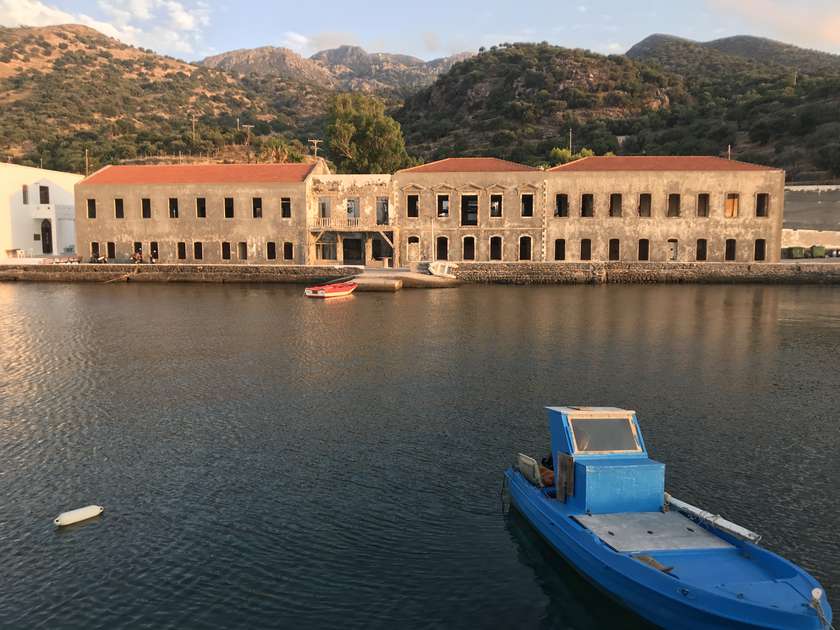
The majority of the buildings are now in decline, either abandoned or in serious need of maintenance and repair.
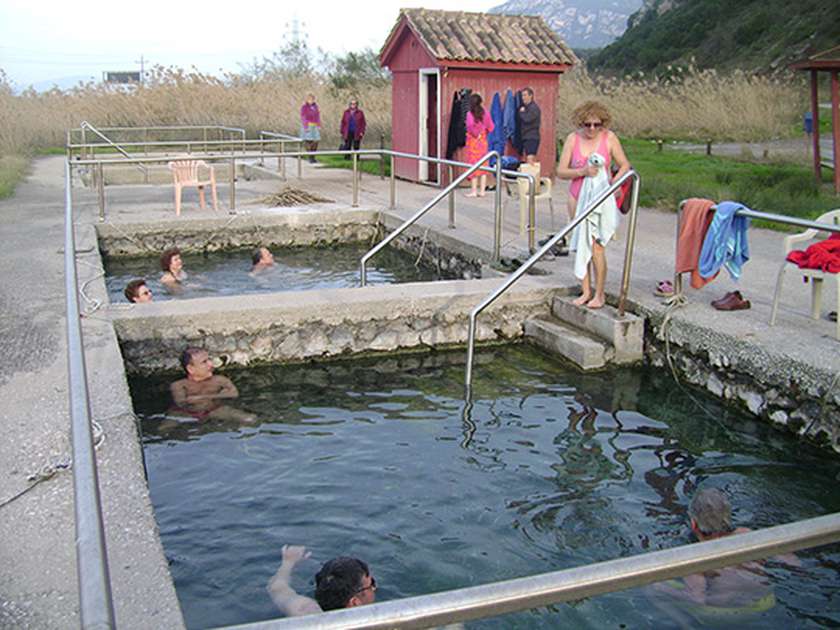
Yet, municipal bath buildings and open air thermal water pits remain a steady “source” of support mostly for low income visitors and senior citizens.
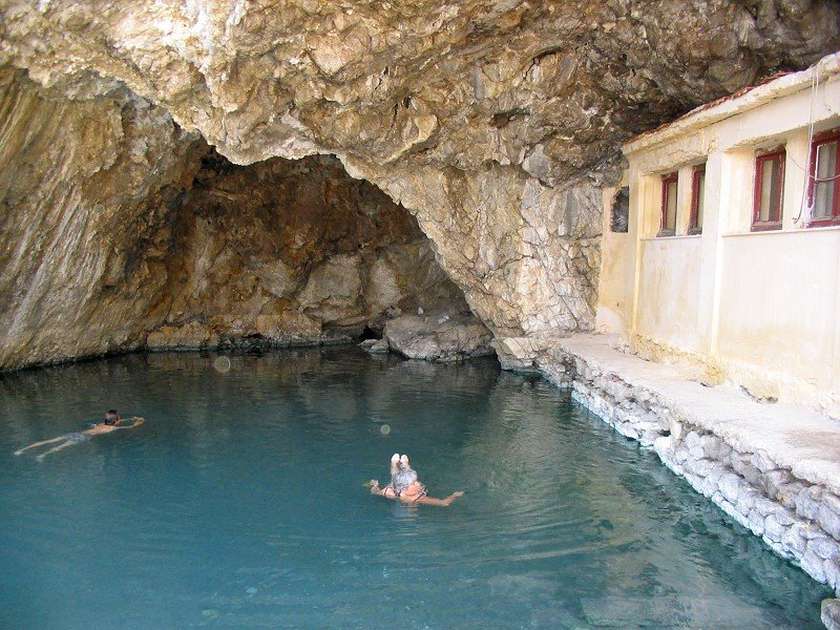
As non-human agents in their various states and forms - seismic, volcanic, geologic, tectonic, healing, vaporous, liquid, muddy, -minerals mobilized a scientific, medical, political, institutional and legislative apparatus. Loutropolis are composites of buildings and landscapes.